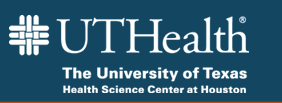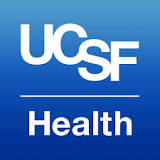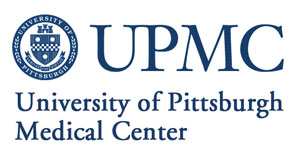Outcomes Following Severe Distal Tibia, Ankle and/or Foot Trauma: Comparison of Limb Salvage Versus Transtibial Amputation Protocol
| Status: | Active, not recruiting |
|---|---|
| Conditions: | Hospital, Orthopedic, Podiatry |
| Therapuetic Areas: | Orthopedics / Podiatry, Other |
| Healthy: | No |
| Age Range: | 18 - 60 |
| Updated: | 3/16/2019 |
| Start Date: | May 2012 |
| End Date: | September 20, 2019 |
Outcomes Following Severe Distal Tibia, Ankle and/or Foot Trauma: Comparison of Limb Salvage Versus Transtibial Amputation Protocol (OUTLET Study)
The primary aim this prospective longitudinal observational outcomes study is to compare 18
month functional outcomes and health related quality of life (HRQoL) of patients undergoing
salvage versus amputation following severe distal tibia, ankle and/or foot fractures with
major soft tissue, bone and/or ankle articular surface loss. Functional outcomes and HRQoL
will be measured using well established self reported measures, including the Veterans Rand
Health Survey (VR-12) and the Short Musculoskeletal Functional Assessment (SMFA).
Hypothesis 1: As a group, salvage patients with severe distal tibia, ankle and/or foot
injuries with major soft tissue, bone and/or ankle articular surface loss will have similar
functional outcomes and HRQoL had they undergone a transtibial amputation (within 6 weeks of
injury).
Hypothesis 2: The subgroup of salvage patients who have either (1) a soft tissue injury that
requires tissue transfer; (2) articular damage requiring arthrodesis of the ankle joint; or
(3) bone loss at the distal tibia or ankle will have better functional outcomes and HRQoL had
they undergone a transtibial amputation (within 6 weeks of injury).
month functional outcomes and health related quality of life (HRQoL) of patients undergoing
salvage versus amputation following severe distal tibia, ankle and/or foot fractures with
major soft tissue, bone and/or ankle articular surface loss. Functional outcomes and HRQoL
will be measured using well established self reported measures, including the Veterans Rand
Health Survey (VR-12) and the Short Musculoskeletal Functional Assessment (SMFA).
Hypothesis 1: As a group, salvage patients with severe distal tibia, ankle and/or foot
injuries with major soft tissue, bone and/or ankle articular surface loss will have similar
functional outcomes and HRQoL had they undergone a transtibial amputation (within 6 weeks of
injury).
Hypothesis 2: The subgroup of salvage patients who have either (1) a soft tissue injury that
requires tissue transfer; (2) articular damage requiring arthrodesis of the ankle joint; or
(3) bone loss at the distal tibia or ankle will have better functional outcomes and HRQoL had
they undergone a transtibial amputation (within 6 weeks of injury).
Inclusion Criteria:
1. Patients with an injury that meets at least one of the following:
1. Gustilo type III pilon fractures consistent with one of the following OTA codes:
43B1.3, 43B2-B3, 43C, 44B, 44C
2. Gustilo type III B or C ankle fractures
3. Gustilo type III mid and/or hind foot fractures consistent with one of the
following OTA codes: 81B2-B3, 82B and 82C
4. Open foot crush or blast injuries from high energy mechanism involving the mid
and /or hind foot with significant soft tissues damage
5. Other severe foot injury (including closed foot crush or blast injuries)
2. Ages 18-60 inclusive.
3. Admitted to the hospital prior to definitive wound closure.
Inclusion notes:
1. Patients may have other injuries except as noted below under exclusion criteria.
2. Foot crush and blast injuries are eligible if they are considered to be at significant
risk for impaired outcome with moderate to severe disability and typically include one
of the following associated injuries:
1. ankle dislocation (80A)
2. subtalar dislocation (80B)
3. extruded talus
4. chopart dislocation (80C)
5. multiple midfoot dislocations (80C)
6. three or greater proximal metatarsal fractures
7. heel pad/plantar degloving
8. extensive muscle necrosis in an open injury from crush, ischemia and/or foot
compartment syndrome
3. These injuries may include "toe-pan" injuries from motor vehicle accidents and
crush-like injuries from motorcycle accidents, and traumatic amputations.
Exclusion Criteria:
1. Patient has a Glasgow Coma Scale motor score of 0-4 or a Glasgow Coma Scale motor
score of 5 with a significant traumatic brain injury (defined as an AIS code of 5 or
6) at time of consent
2. Patient has third degree burns on >10% total surface area affecting the study limb
3. Patient has a previous leg or foot amputation of either limb
4. Patient is non-ambulatory due to an associated complete spinal cord injury
5. Patient non-ambulatory pre-injury
6. Patient speaks neither English nor Spanish
7. Patient likely to have severe problems with maintaining follow- up due to at least one
of the following:
1. Patient has been diagnosed with a severe psychiatric condition
2. Patient is intellectually challenged without adequate family support
3. Patient lives outside the hospital's catchment area
4. Follow-up is planned at another medical center
5. Patients who are prisoners or homeless
We found this trial at
33
sites
Click here to add this to my saved trials
University of Alabama at Birmingham The University of Alabama at Birmingham (UAB) traces its roots...
Click here to add this to my saved trials
Click here to add this to my saved trials
7000 Fannin St
Houston, Texas 77030
Houston, Texas 77030
(713) 500-4472

University of Texas Health Science Center at Houston The University of Texas Health Science Center...
Click here to add this to my saved trials
St. Vincent Indianapolis Hospital At St.Vincent Indianapolis, everything we do begins with a focus on...
Click here to add this to my saved trials
University of Mississippi Medical Center The University of Mississippi Medical Center, located in Jackson, is...
Click here to add this to my saved trials
Click here to add this to my saved trials
University of Maryland Medical Center Founded in 1823 as the Baltimore Infirmary, the University of...
Click here to add this to my saved trials
University of Virginia The University of Virginia is distinctive among institutions of higher education. Founded...
Click here to add this to my saved trials
Click here to add this to my saved trials
Duke Univ Med Ctr As a world-class academic and health care system, Duke Medicine strives...
Click here to add this to my saved trials
Click here to add this to my saved trials
Click here to add this to my saved trials
Click here to add this to my saved trials
Click here to add this to my saved trials
Click here to add this to my saved trials
Click here to add this to my saved trials
Click here to add this to my saved trials
Click here to add this to my saved trials
Click here to add this to my saved trials
Click here to add this to my saved trials
University of Pittsburgh Medical Center UPMC is one of the leading nonprofit health systems in...
Click here to add this to my saved trials
Click here to add this to my saved trials
Click here to add this to my saved trials
Click here to add this to my saved trials
Click here to add this to my saved trials
505 Parnassus Ave
San Francisco, California 94143
San Francisco, California 94143
(415) 476-1000

University of California, San Francisco Medical Center UCSF Medical Center is recognized throughout the world...
Click here to add this to my saved trials
Click here to add this to my saved trials
Click here to add this to my saved trials
Click here to add this to my saved trials
Click here to add this to my saved trials
Click here to add this to my saved trials







